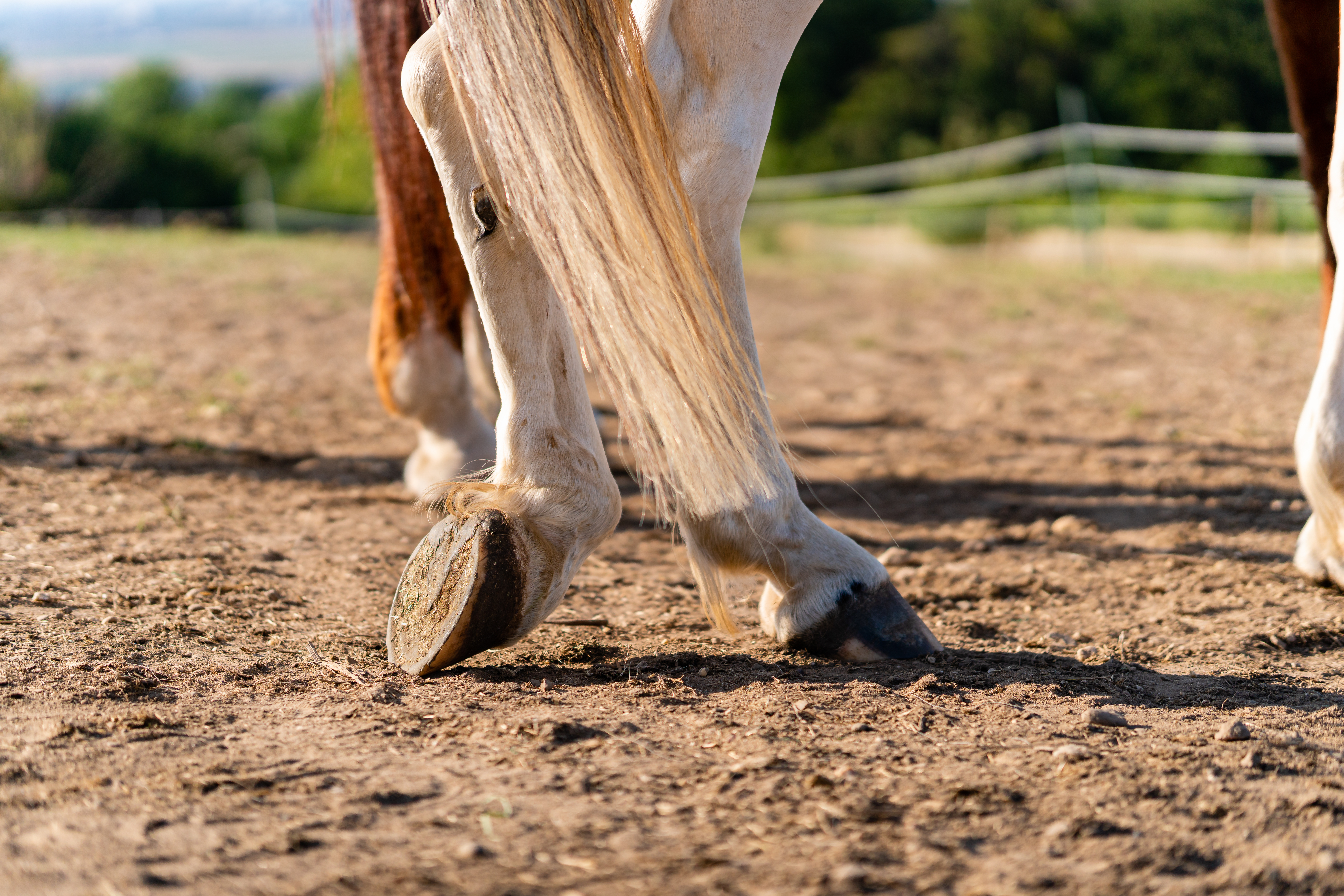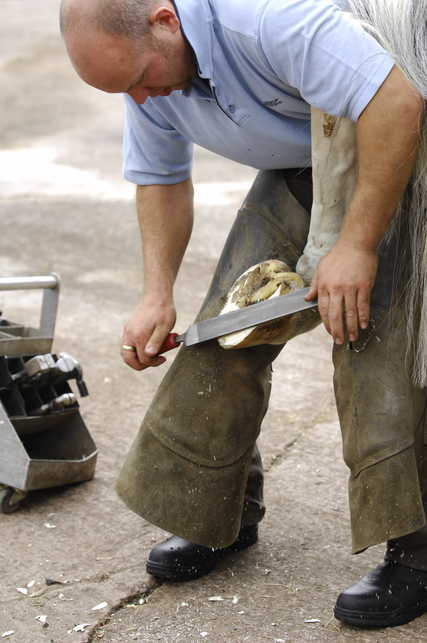Older horses may drag their back feet for a variety of reasons, including arthritis and muscle atrophy. Arthritis, which can be caused by aging or injury, can cause pain in the joints that make it difficult for the horse to lift its feet properly when walking. Muscle atrophy is another common problem in older horses; if the muscles don’t have sufficient strength to support the weight of the hoof, then they will not be able to fully extend them when taking steps.
In either case, veterinary care should be sought immediately, as these conditions can lead to further lameness and discomfort if left untreated. Additionally, changes to diet or exercise routine may need to be made so that the horse’s body is better equipped to carry itself with ease and comfort.
If you notice your older horse dragging their back feet when walking, it could be a sign of an issue related to age or health. Common issues include arthritis, navicular disease, and laminitis. It is important to bring your horse to the vet for a thorough exam to determine what exactly is causing this behavior so that proper treatment can begin as soon as possible.
In some cases, supportive care such as physical therapy or even surgery may be necessary in order for them to move comfortably once again. If you went to know more about older horse dragging back feet, keep reading!
Q&A – Horses Who Drag Their Hind Feet
Why is My Horse Not Picking Up His Back Feet?
If your horse is having trouble picking up his back feet, it could be due to a number of issues. It may be that he has an injury or soreness in the area and thus is hesitant to pick up his feet as it causes him pain. If this is the case, you should have your vet check him out so they can diagnose and treat any underlying issues.
Alternatively, if there are no health concerns then it could be a training issue; for example, improper cues or lack of familiarity with the cue in question can cause this problem. In such cases, professional help from an experienced equine trainer would likely be beneficial in helping to resolve the issue.
Why is My Horse Reluctant to Pick Up the Hind Leg?
There are many reasons why a horse might be reluctant to pick up its hind leg. It could be due to pain or discomfort, such as an old injury, soreness from work, or even the presence of an abscess. Other possible causes could include fear and anxiety; if the horse has had a bad experience with having their hind legs lifted in the past, it may become hesitant to do so again.
If your horse is exhibiting this behavior regularly, it’s important to consult with your veterinarian in order to determine what is causing this reluctance. Depending on the underlying cause, treatment options can range from rest and rehabilitation exercises for soreness/injuries, desensitization training for fear-based issues, or antibiotics for any infection present.
How Do I Stop My Horse from Dragging His Toes?
The most effective way to stop your horse from dragging its toes is by improving the balance and strength of its legs. To do this, begin with basic groundwork exercises such as circles, figure 8s, haunches-in/out, shoulder-in/out, etc. This will help build up the muscles in their legs and improve balance.
You can also try engaging them on long reins over poles or cavaletti to help encourage them to pick up their feet more actively. If these methods are unsuccessful, you may need to seek out professional assistance from a qualified trainer who can evaluate your horse’s gait and provide proper guidance for developing better leg strength and coordination.
What is Equine Hind End Lameness?
Equine hind end lameness is a condition that affects horses, where they experience pain when using their hind limbs. This can be caused by various types of injuries to the legs or back, such as sprains, strains, fractures, and abscesses. Other causes include arthritis or joint inflammation due to overuse and poor conformation.
The most common symptom of equine hind-end lameness is an uneven gait while walking or trotting. Other signs may include increased sensitivity in certain areas of the horse’s body when touched and difficulty rising after lying down for long periods of time. Diagnosing this condition typically involves performing physical exams on the affected area and sometimes X-rays, ultrasounds, or MRI scans may be necessary to determine the exact cause of lameness.

Credit: equusmagazine.com
Horse Dragging Back Feet Competition
Horse dragging back feet competitions are a unique and entertaining event that can be seen at rodeos, fairs, and other equestrian events. This competition is designed to test the horse’s ability to drag an object between its hind legs while being ridden by a rider. The competitor with the best time wins!
It’s an exciting activity for both horse riders and spectators alike as it demonstrates the power of teamwork between man and animal.
Horse Dragging Back Feet Down Hill
When a horse drags their feet down a hill, it is typically an indication of poor hoof balance and/or improper trimming. This behavior can cause the horse to have difficulty navigating the terrain or may even cause injury if left unchecked. The best course of action for this situation is to consult with your veterinarian or farrier in order to determine what corrective measures need to be taken in order to improve your horse’s foot health and prevent further dragging.
Horse Dragging Hind Toe in Trot
Horse dragging their hind toe in the trot is an issue that many riders encounter. Essentially, it means that when a horse’s hooves hit the ground, the hind foot lands and drags along before leaving the ground again. This can be caused by poor conformation, incorrect shoeing or muscle imbalance issues among other things.
It’s important to address this issue as soon as possible so that it doesn’t lead to further problems such as lameness or joint pain down the road. Working with your veterinarian and farrier are great ways to start finding out what could be causing this issue and how you should go about fixing it for your horse!
Horse Dragging Back Feet Yellowstone
Horses are one of the most majestic animals to roam in Yellowstone National Park. However, a common behavior that visitors may observe is horse dragging back feet. This occurs when a horse’s hoof has become overgrown and causes discomfort when walking, so it attempts to relieve itself by dragging its back feet along the ground.
Fortunately, this issue can be easily addressed with regular farrier visits so that horses can continue their roaming around Yellowstone without any pain or discomfort.
Why is My Horse Dragging His Front Feet
If your horse is dragging his front feet, it could be due to a number of different causes. It could be caused by lameness or pain in the legs and hooves, fatigue from too much work, or incorrect shoeing that does not allow for proper traction. If your horse has had any changes in exercise routine recently or if you suspect he may have an underlying issue causing him pain, contact a veterinarian as soon as possible for diagnosis and treatment.
Horse Dragging One Hind Leg
Horse dragging one hind leg is a serious issue that a variety of different medical conditions can cause. Common causes include fractures, tendon, and ligament injuries, dislocated hips and stifle joints, laminitis (inflammation of the hoof structures), arthritis, or soft tissue injury. In any case, where your horse is dragging his hind leg, it should be examined by your veterinarian as soon as possible to determine the cause and provide appropriate treatment.
Hind Leg Weakness in Horses
Hind leg weakness in horses is a common issue and can be caused by several factors, including old age, poor nutrition, injury or illness. Symptoms of hind leg weakness include decreased strength in the back legs and difficulty rising from a lying position. If your horse is showing signs of hind leg weakness, it’s important to consult with your veterinarian to determine the cause and create an appropriate treatment plan.
Horse Twisting Hind Leg When Walking
When a horse is walking, it is not uncommon to see them twist their hind legs inwards. This twisting of the leg can be caused by several things, such as an imbalance in muscle development or tightness throughout the body. It can also indicate that pain may be present and should always be looked at by a professional equine veterinarian before further action is taken.
Regular exercise stretches and massages are some preventative measures that can help reduce this behavior over time and keep your horse healthy!
Conclusion
In conclusion, older horses may suffer from a variety of conditions that can cause them to drag their back feet. While some of these conditions are treatable, others may be permanent. If you notice this behavior in your horse, it is important to talk with your vet and have the animal examined so that an accurate diagnosis can be made and appropriate treatment provided if necessary.
By doing so, you will help ensure that they continue to enjoy a comfortable life with their owner for many years to come. Thank you for reading our post about older horse dragging back feet.


